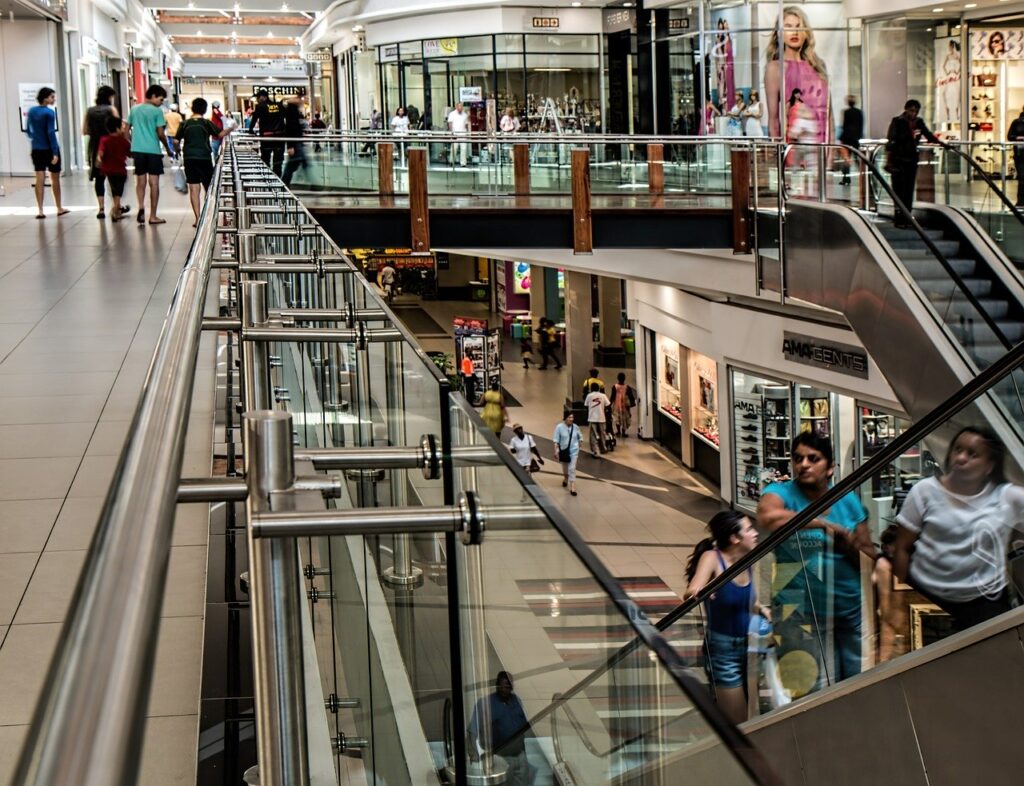

As more people shop online, malls are suffering. Singapore’s mall occupancy rate reached its lowest in 10 years in Nov 2016, according to Bloomberg.[1]
Over in China, its top 50 retailers saw a 1.9% decline in sales in the first nine months of 2016.[2]
In fact, a recent study by eMarketer revealed that nearly 40% of millennials would purchase everything online if they could.[3]
Yet, Chinese e-commerce giant Alibaba recently bought one of China’s largest mall operators, Intime, for USD2.6 billion. In the United States, Amazon is launching its cashier-less, automatic payments-based “Amazon Go” stores, where shoppers simply grab and go.
This begs the question: What is the future of malls?
The mall of the future will look a lot different than it does today. Innovation is set to disrupt both in-person and online shopping for these centres of mass consumerism.
Business models, designs, and product offerings will be flipped on their heads. Instead of being a place to shop for the immediate with a stop for entertainment or lunch, the next generation mall will be an entertainment hub offering consumers a chance to browse a showroom.
Customers are looking for not only the best fit and style, but also the best price. Many consumers now make pre-purchase price checks online to ‘price match’ their items before they buy. Enabling them to use their smartphones or tablets in the store to make the purchase will reduce the need to carry as much stock, as express shipping models enable the inventory warehousing to move from the back of the store to larger, less expensive distribution centres. (The current layout is up to 70% dedicated to retail [4] with up to 25% of the retail space dedicated to inventory.[5])
By moving the inventory away from the store, retailers can either reduce the size of the store or increase the number of stock keeping units (SKUs) offered at one time, which allows them to offer more personalised product offerings without additional inventory cost.
Deployment of other technologies such as 3D printing will further drive the reduction of the need for inventory. For example, the increase in speed and affordability of high quality 3D printers will allow for the 3D weaving of a unique sweater, or printing a camera mount on demand, and therefore allow for retailers to continue to offer more products without the need to hold stock.
To attract more foot traffic, mall operators can start allocating the extra space saved from smaller storefronts and reduction in inventory needs to improving in-person experiences.
They could also turn the leftover inventory space to a two lane bowling alley, a bar, simulated golf course or hair salon. Experiences that cannot be recreated online, such as rock climbing or drinking, will continue to thrive as congregation points and drive consumers back to malls.
Increasing, the seasonality of offerings can drive more foot traffic. Offering Christmas markets or pop up concerts and shows will let customers have unique experiences that they couldn’t have online.
To combine the idea of smaller spaces and entertainment driving customers towards malls, retailers must start offering more digitised, modern, experiential shopping experience.
For example, augmented reality mirrors will allow for customers to ‘try-on’ multiple different outfits, digital assistants can pick out the best clothes for someone’s eye colour, apps will enable customers to remotely call a robot to deliver a different size into the dressing room, or the novelty of automated payments will bring customers in. Creating this unique brand-defining experience can entice customers to come back over and over again, whether for pure convenience or a novel engagement between brand and customer.
With the continued growth of e-commerce, the changes in technology and the shifts in consumer habits to pay for experiences over “things,” it is clear that the mall of the future will look different than the past. Whether they become showrooms, experience hubs or a combination of the two is yet to be fully seen, but what is clear is that retailers and operators need to innovate to stay relevant.
Adam Stout is a consultant at TRPC Pte. Ltd. He focuses on e-commerce, e-payments and cloud computing and is interested in the future of commerce. Contact him at [email protected]
[1] https://www.bloomberg.com/news/articles/2016-10-28/singapore-s-mall-vacancies-jump-to-highest-level-in-a-decade
[2] https://insideretail.asia/2016/11/11/retail-decline-in-china-says-fitch-report/
[3] https://www.emarketer.com/Article/How-Millennials-Shop-Online/1010031/
[4] https://www.forbes.com/sites/nanhiein/2016/01/05/allan-zeman-sees-the-future-of-the-mall-as-less-retail-more-lifestyle-and-entertainment-spaces/#60adc2b1426f
[5] https://www.entrepreneur.com/encyclopedia/retail-location